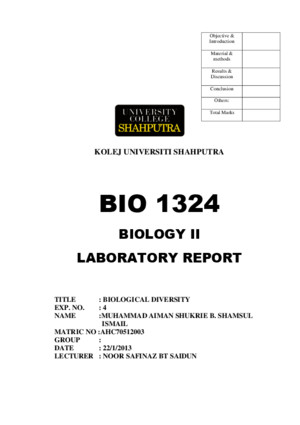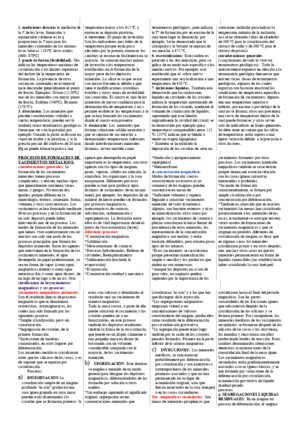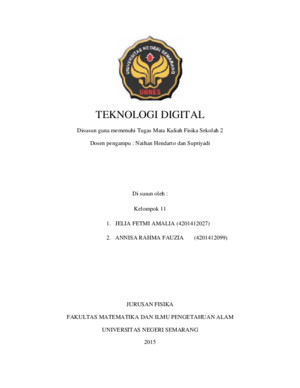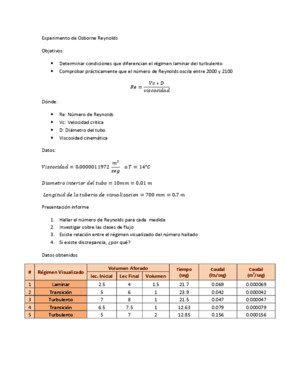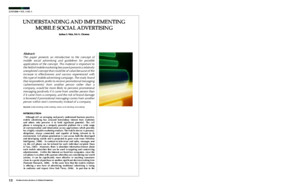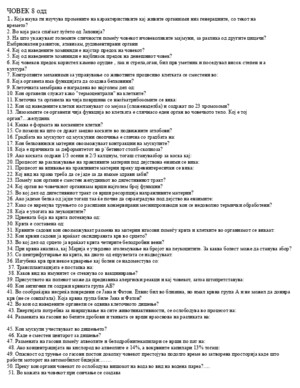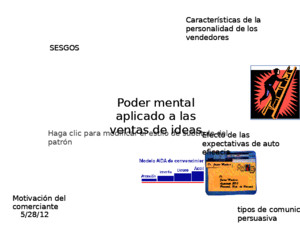experiment biological diversity
There is document - experiment biological diversity available here for reading and downloading. Use the download button below or simple online reader.
The file extension - PDF and ranks to the Documents category.
Tags
Related
Comments
Log in to leave a message!
Description
Download experiment biological diversity
Transcripts
Objective & Introduction Material & methods Results & Discussion Conclusion Others: Total Marks KOLEJ UNIVERSITI SHAHPUTRA BIO 1324 BIOLOGY II LABORATORY REPORT TITLE EXP NO NAME : BIOLOGICAL DIVERSITY :4 :MUHAMMAD AIMAN SHUKRIE B SHAMSUL ISMAIL MATRIC NO :AHC70512003 GROUP : DATE : 22/1/2013 LECTURER : NOOR SAFINAZ BT SAIDUN OBJECTIVES 1 To identify gram-negative and gram-positive bacteria 2 To identify the characteristic of protist and fungi INTRODUCTION Protist and fungi are one of five kingdoms of biodiversity Both groups are eukaryotic having membrane bound organelles and a nucleusOther than that, Protists and Fungi live in moist and humid places But Protists live in water and ponds but Fungi cannotThis is why in this experiment we will also need a sample of water pond That is about all the similarity there is when the entire group is considered These groups are very disimilar Fungi are heterotrophs with chitinous cell walls composed of hyphae, they are generally multicellular and may reproduce sexually and asexually, most but not all, are found on land Protists are varied, and may have chlorophyll, cellulose cell walls or membranes, can be multicellular or unicellular, many are aquatic either fresh or marine environments They have sexual and asexual reproduction Materials 1 Prepared slides(5) 2 Slides 3 Coverslips 4 Pond water 5 Methylene blue 6 Microscope 7 Iodine 8 Tissue 9 Dropper Procedure 1 All five prepared slides that contain Streptococcus pyogenes, Salmonella typhi, Rhizopus conjugation, Cup Fungus Apothecium, and Volvox Flagella were observed by using a light microscope The observations made were recorded By using a dropper, a drop of water dropper was put on a slide A cover slide was carefully put on the slide that has a drop of water pond No4 was repeated until there are no bubbles under the cover slip A drop of methylene blue was put at one of the end of the cover slip A piece of tissue was put at the other end of the cover slip The prepared slide was observe under a light microscope The observation made was recorded Procedure 3-9 was repeated by using iodine instead of methylene blue 2 3 4 5 6 7 8 9 10 Results Streptococcus Pyogenes Salmonella Typhi Rhizopus Conjugation Cup Fungus Apothecium Volvox Flagella Water pond: Mehtylene Blue Water pond: Iodine Discussion 1 Streptococcus Pyogenes and Cup Fungus Apothecium are both gram-positive because there are purple colour when observed under light microscope while Salmonella Typhi, Rhizopus Conjugation, and Volvox Flagella are gram-negative because there are pink colour when observed under light microscope 2 To see what kind of cells in water ponds, we can see them under light microscope with an average lens power of the microscope after we stained the specimen with either iodine or methylene blue Both iodine and methylene blue will give colours to organelles of cells so that they are vidible via light microscope 3 When the water pond is stained by iodine at the slide, we can observed some Streptococcus pyogenes and Salmonella typhi via light microscope 4 When the water pond is stained by methylene blue at the slide, we can observe some Rhizopus conjugation via light microscope Conclusion 1All gram-positive bacteria have purple colour while all gram-negative bacteria have pink colour when observed under light microscope 2 Both protist and fungi have various kinds of shape and there are bacteria in water ponds that can only be detected under light microscope after stained either with iodine or methylene blue
Recommended

